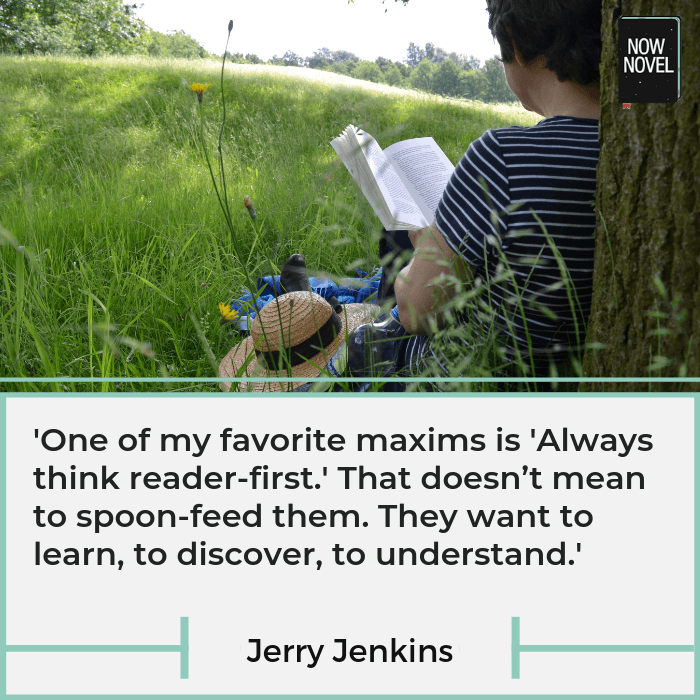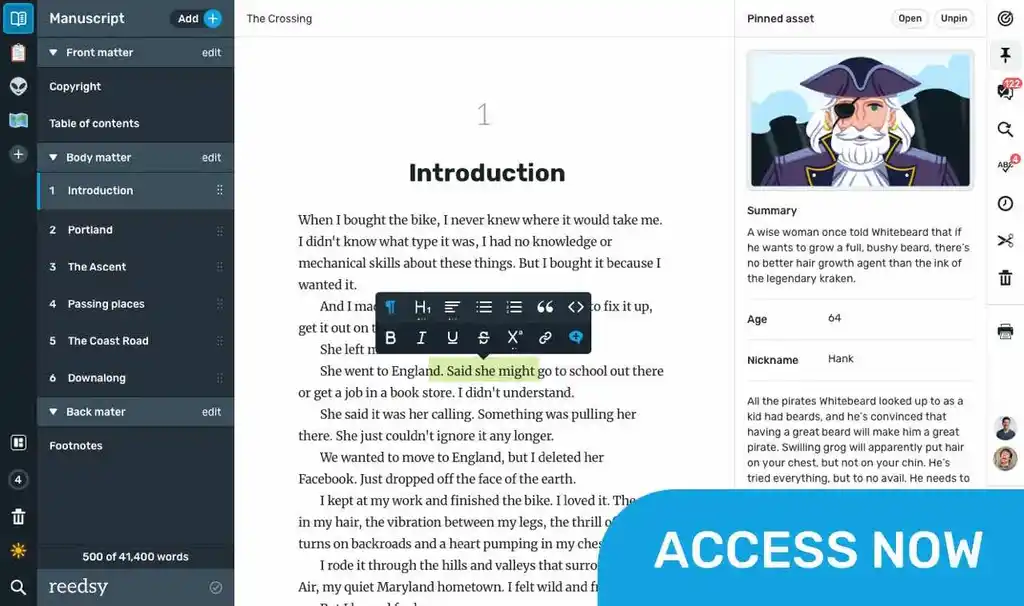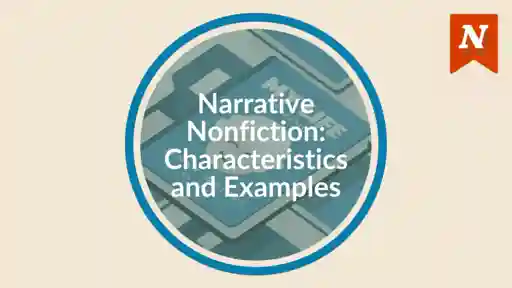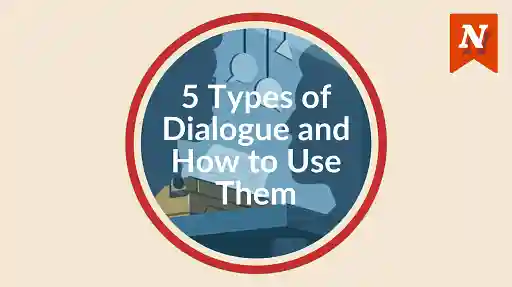Guest author Jerry Jenkins shares his top tips for authors, including 'engaging the theater of your reader's mind' and resisting the urge to explain.
A writer wrote me recently and complained she was struggling to get enough detail into her story to give her readers the 'same pictures I see in my head.'
At first blush that might seem a worthy goal, one we should all strive for. But it’s a huge mistake.
If you succeed, you could crush your reader’s imagination.
I advise the exact opposite: Don’t dictate what your readers should see.
We mature as novelists and artists when we come to realize that the reader is our partner in the effort and wants—needs—a role in the experience.
Engage the Theater of Your Reader’s Mind
The most common response to a movie made from a novel is, “The book was better.” Why? Because the pictures evoked in our minds by the author’s words are far more creative than Hollywood can ever be.
Don’t strive to make your readers see exactly what is in your mind. Trigger the theater of their mind, and however many readers you have, that’s how many views of your story will be imagined.
The late great detective novelist John D. MacDonald once described an orbital character as knuckly. I don’t know about you, but I instantly formed a complete picture of that man in my mind.
In Left Behind I described a computer techie as oily. My editor said, “Couldn’t you say he was pudgy, with longish blond hair, and that he kept having to push his glasses back up on his nose?”
I said, “If that’s what you saw when you read he was oily, why do I have to say it?”
“Hmm. Point taken.”
That series was read by tens of millions. If some saw him the way my editor did, and others saw him tall and skinny and without glasses, so much the better.
For my main characters, which I discuss on my blog here, I provided enough information so readers knew their builds and perhaps their hair color and whether others found them attractive. And I showed them in action so it was clear whether they were athletic or capable or not.
But if some readers wanted to imagine my pilot as Harrison Ford and others saw him as Sean Connery, fine (he wound up being played by Nicolas Cage). And if some saw the flight attendant as Julia Roberts and others as Jennifer Aniston, who was I to quibble?

Two adages to live by
One of my favorite maxims is 'Always think reader-first.' That doesn’t mean to spoon-feed them. They want to learn, to discover, to understand.
Don’t do all their work for them.
This fits with another chestnut I used to write in the margins of student writers’ manuscripts and now keyboard into their files: 'Resist the Urge to Explain' (RUE).
I once read of a woman who was thrilled to discover in her parents’ home a volume she had cherished as a child. She eagerly thumb through it for beautiful four-color paintings she remembered so well, only to find that the book had no illustrations!
The author had so engaged her, triggering the theater of her young mind, that she herself had created those very real memories.
Get this right…
And you do more than make your reader your partner and let them in on half the fun. You make them a repeat reader.
It doesn’t get much better than that.
Jerry Jenkins has written 195 books with more than 70 million copies sold (including 21 New York Times bestsellers). He owns The Jerry Jenkins Writers Guild where he teaches writers online.










This is one of the biggest reasons I struggle as a writer, because as a reader I would prefer if the writer would try to give me a perfect image in my head. It's not that I have no imagination, but growing up I always felt like it was the writer's job, as the God of their own work, to use their imagination, whereas it's the reader's job to simply accept the imagination which they have constructed. It's the reason that it took me a long time to actually get into reading books, when I was really young I found novels so boring because I could never get clear images in my head of what was going on. As an aspiring writer, this is one of the biggest things which I've had to learn to overcome in my own writing.
Jak Cooper - Over 6 years ago
Hi Jak, Thank you for your deep engagement with Jerry's article. I'm glad you've overcome the challenge! It's interesting you mentioned the writer being like 'the God of their own work'. The writer Roland Barthes wrote an essay called 'The Death of the Author' where he said (to summarize) that reading involves the 'death of the Author' (with a capital A, the author as a sort of 'God' or creator of the story). In that, like God, the author isn't necessarily physically present for us to pose direct questions to (we only have the text they have left us to understand their meaning and intent, often). So the reader becomes a co-creator of meaning (Barthes calls this process of becoming an interpreting reader 'the birth of the reader'). Thanks for reading.
Jordan At Now Novel - Over 6 years ago
I completely agree. You shouldn't explain every little detail, and some things are better left to the imagination. I'm running into a bit of a problem with that in my story. The character who's POV I'm writing from is a little... obsessive about the way things look, feel, etc. Is there a way I can work with the crazy detailed descriptions so they don't bore readers??
Talia - Over 6 years ago
Hi Talia, Thank you for sharing that. That's an interesting challenge. Could you perhaps find ways to streamline/truncate the way they obsess over the way things look? For example, instead of them describing the way a painting is hanging slightly skew twice, you could say 'I double-checked the painting - is it just me or is it skew again?' Phrasing their obsessive musings as questions, actions, doubts - these could help make the obsessive moments puzzling/teasing/suspenseful instead of monotonous and repetitive. I hope that helps! Thanks for reading.
Jordan At Now Novel - Over 6 years ago
This is by far my favorite blog post from this site, which I check my emails and read every day. I too struggled with this as a writer at first, thinking that every little detail had to be added to a description so the reader can feel as though he's walking around in your world. It wasn't until I read Elmore Leonard and Walter Mosley that I discovered that you can give a vivid description of a person, place or thing in just a few sentences, if not just one sentence. George V Higgins, also one of my favorite authors, hardly ever use descriptions in his novels, mostly just dialogue. But when you read his books, you feel like you're sitting right there with his characters, with the settings clear as day using YOUR OWN VIVD IMAGINATION!! Most readers I talk to love novels that move with fast pacing, that his not weighted down with heavy, boring descriptions that end up putting you to sleep. Thank you, Jerry Jenkins, this was a fun, helpful blog to read.
Juan Mendez Scott - Over 6 years ago